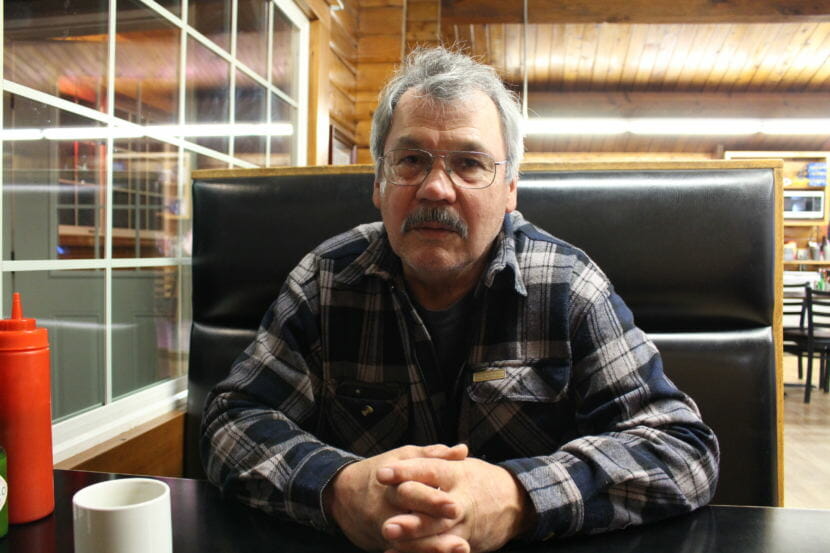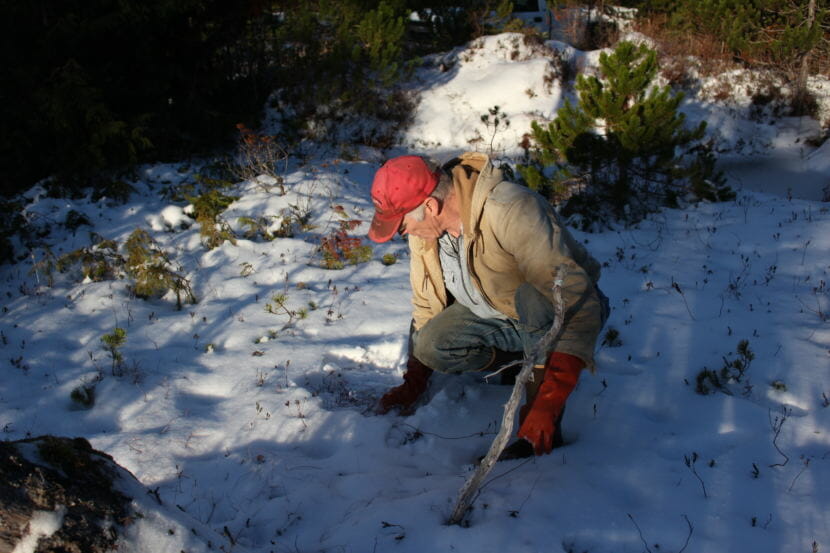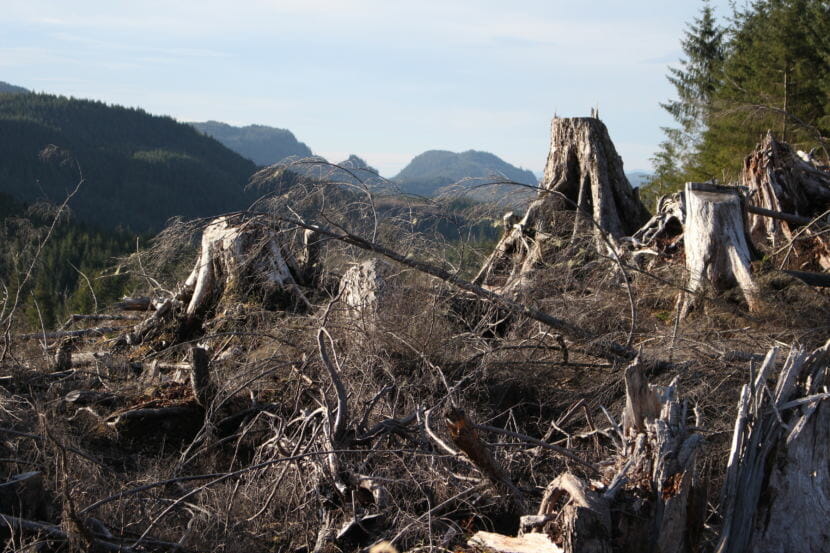
This deer season has been the worst in recent memory for a lot of hunters on Prince of Wales Island. In the past, large-scale industrial logging damaged important winter habitat, and some locals believe there’s another reason there’s so few deer on the island: too many wolves.
Go anywhere in Craig and you’re likely to overhear bits of conversation about the deer season.
That includes the local diner, the kind of place that displays its homemade pies behind glass. Mike Douville has just returned from a long day of hunting.
Over sips of coffee, he explains how he bagged one deer today. But it’s taken him longer to fill his freezer this year. He remembers more plentiful seasons, and that’s not the only change he’s seen on the island during his lifetime.
Douville says nearly all the big trees were standing when he was young. The first logging camps were just getting started.
“The island was pristine. There was no clear cuts on it,” he says. “So I’ve watched it turn from that into what it is today.”
Large swaths of trees have been logged here since the 1960s. It’s left poor habitat for deer and the other wildlife. Without a canopy of old growth, snow can easily fall to the ground — obscuring important feeding spots.
Douville serves on the regional advisory council that makes recommendations to the federal subsistence board and the state.
He says finding fewer deer on the island is affecting people’s livelihood.
“This is rural Alaska. It’s bush Alaska,” Douville says. “We don’t like to buy meat. It’s eight or nine bucks a pound.”
Still, he says logging is just one factor. The other is a rapidly growing wolf population. The wolves are devouring the deer.

“If you’re going to harvest deer, you have to harvest wolves,” Douville says.
But not everyone agrees killing wolves is a good idea.
In 2011, conservation groups petitioned the feds to protect the Alexander Archipelago wolf under the Endangered Species Act. Around that time, it was estimated there were about 89 wolves living in the unit — less than half of what was there 20 years before. But the wolves didn’t wind up receiving additional federal protections.
Instead, there have been joint-efforts with the state to stabilize the population, and the numbers of wolves has been increasing. Estimates from 2016 suggest there are 231 wolves in the unit.
Still, it’s not easy getting a handle on how many wolves there are.
Mike Kampnich is driving his pickup truck to the top of a snowy ridge. He makes this rough ride regularly to collect hair samples from the Alexander Archipelago wolf.
Kampnich used to be a logger when he arrived on the island more than 30 years ago. But now, he works for the The Nature Conservancy.
“You know, some of the guys I worked for in the past. They’re like, you work for who?” he says with a chuckle.
We stop at one of the hair board sights. Essentially, a piece of plywood nailed to the ground and rigged with barbed wire. A stinky goo is placed on top. The wolves like to rub up against it, so it’s the perfect comb for capturing their fur.
Kampnich is careful to cover his tracks as we walk over to it.
He puts on his glasses to get a better look. But there are no strands tangled in the barbwire. This is just one of 21 locations he’ll check on the island over the course of two days. When he does hit the jackpot, the hair is sent off to a lab to be analyzed by the state.

The Alaska Department of Fish & Game uses the individual animal’s DNA to calculate the wolf population, and a percentage of that becomes the wolf quota — the number of wolves that can be trapped or hunted each year.
Kampnich says it can be a touchy subject, locally. On a couple of occasions, he’s seen hair boards vandalized and trail cams disappear.
“It’s really frustrating,” Kampnich says. “But you know, some people will mess with your stuff.”
He doesn’t think it’s all related to tensions over the wolf population. Sometimes it looks like petty crime.
“It’s probably a little of both,” he says.
But Kampnich says wolf hunters have helped him, too. They’ve shown him good spots to place the hairboards.
“I’ve helped him quite a bit because I’ve lived here. I’ve trapped wolves,” Mike Douville says.
Douville wants there to be accurate wolf population estimates. And although he’s helped Kampnich in the past, he thinks using just the hairboards misses the mark.
The wolf population, he says, is bigger than the science alone suggests. So the wolf quota should reflect that.
Douville thinks anything above 175 wolves should be a harvestable surplus. Below that, hunters should be able to take up to 20 percent of the population.
“I don’t think anybody here is interested in wiping them out,” Douville says. “We’ve always got one or two that might think that way. But for the most part, they’re OK with wolves. Just not so many.”
Douville would like to see more traditional knowledge factored in to how the state gauges the number of wolves. But he says getting the wolf population figured out isn’t the only step to securing a future for the island’s deer.
He thinks big timber sales on Prince of Wales should become a thing of the past — even if that means the last remaining sawmill dries up.
“I’m not willing to sacrifice this island to keep it running,” Douville says. “I think there’s a limit on how much you donate to the cause and I think that we’re there.”
Douville says he wants to live on the island from his childhood. It includes a healthy forest for humans, deer and wolves.
Tongass in Transition is a series about trees told through the stories of people. Reporting for this was made possible by an award from the Institute for Journalism and Natural Resources.
